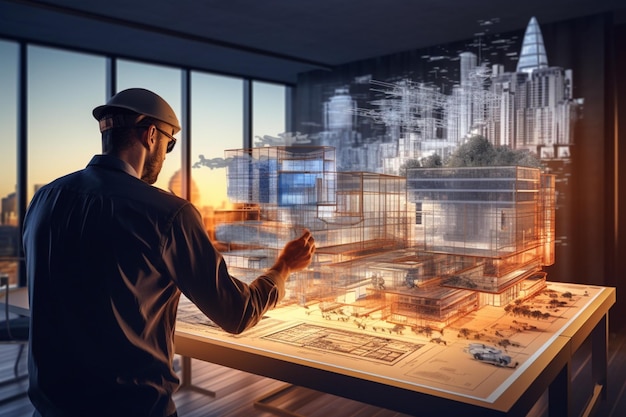
Introduction
In recent years, technology has reshaped countless industries, and architecture is no exception. From design to construction, advancements such as artificial intelligence (AI), 3D printing, and smart materials are transforming how architects conceptualize, create, and build structures. These innovations are not just expanding the boundaries of architectural possibilities but are also leading the way to more efficient, sustainable, and functional designs.
For students seeking to master these advancements, an Architecture Institute in Mumbai can provide the foundation and hands-on experience needed to excel in a technology-driven landscape.
Artificial Intelligence: Enhancing Architectural Design
Artificial intelligence has emerged as a powerful tool, revolutionizing the way architects approach design. AI-based systems allow for analyzing large datasets to inform design decisions, optimize layouts, and predict a building’s performance.
By simulating environmental factors, architects can use AI to create energy-efficient structures that capitalize on natural light and reduce energy consumption.
AI-powered software can generate a multitude of design options based on predefined criteria, allowing architects to explore unconventional yet practical solutions that may not have been considered through traditional methods.
Additionally, AI-driven tools such as Building Information Modeling (BIM) foster collaboration among architects, engineers, and contractors. BIM’s integrated approach aligns stakeholders from the outset, reducing errors, streamlining project timelines, and creating a cohesive vision.
3D Printing: Revolutionizing Construction Methods
3D printing stands out as a groundbreaking advancement in modern architecture, allowing architects to construct intricate designs and components that are often challenging to achieve through traditional methods. This technology can utilize materials like concrete, plastics, and even biological substances to create complex shapes on-site. By reducing waste and potentially lowering costs, 3D printing has transformed construction’s sustainability and affordability.
Entire homes have been successfully constructed using 3D printing technology, demonstrating its potential in providing cost-effective housing solutions with minimal environmental impact. Additionally, the flexibility of 3D printing offers architects endless customization options, enabling tailored designs that reflect the unique preferences of individual clients.
Smart Materials: Paving the Way for Sustainable Design
The emergence of smart materials is another technological leap with significant architectural implications. These materials adapt to environmental changes, enhancing a building’s sustainability and lifespan. For example, phase-change materials (PCMs) absorb and release heat to stabilize indoor temperatures, while self-healing concrete can automatically repair cracks, extending the structure’s life and lowering maintenance costs.
Sustainability has become a major priority within the architectural field, and smart materials play a central role in reducing the environmental footprint of buildings. Solar panels, green roofs, and energy-efficient systems are increasingly incorporated into modern designs, aligning with eco-friendly practices. With tools to analyze energy performance and environmental impact, architects are better equipped to make informed, sustainable decisions.
The Future of Architecture: Embracing Emerging Technologies
As technology continues to evolve, the architectural field is poised for further transformation. Virtual reality (VR) and augmented reality (AR) are already enhancing the design experience, offering architects and clients a realistic visualization of projects before they are built. This immersive experience fosters clearer communication, reducing misunderstandings and improving project outcomes.
Robotics in construction is another exciting development, with automated systems now handling tasks from bricklaying to painting. By speeding up construction and taking on dangerous tasks, robots improve workplace safety and reduce project timelines, offering architects and construction teams new levels of efficiency.
The Role of an Architecture Institute in Mumbai
For aspiring architects, understanding and harnessing these technological advancements is essential to success in a rapidly evolving field. Choosing the right architecture institute in Mumbai can be pivotal for students who want a future-ready education. The Thakur School of Architecture and Planning (TSAP) in Mumbai is one such standout institute that provides aspiring architects with a comprehensive education focused on innovative design and technology.
As a well-established architecture institute in Mumbai, TSAP’s Bachelor’s in Architecture program spans five academic years (or ten semesters) and includes a six-month practical training period within a professional setting. This immersive program emphasizes sustainable practices and cutting-edge tools, ensuring that graduates are prepared to excel in an increasingly tech-driven architectural landscape.
Conclusion
The fusion of technology and architecture is reshaping our approach to building design and construction. Through AI-powered design, 3D printing innovations, and smart materials, architects are pushing boundaries to create structures that are not only aesthetically unique but also highly efficient and sustainable. The future of architecture promises to be shaped by these technologies, leading to environments that are both responsive to societal needs and kind to the planet.
For the next generation of architects, enrolling in an architecture institute in Mumbai, like Thakur School of Architechture and Planning (TSAP), offers a solid foundation in modern techniques and practices. Such institutions provide the skills and hands-on experience needed to become leaders in an increasingly tech-driven architectural landscape.
